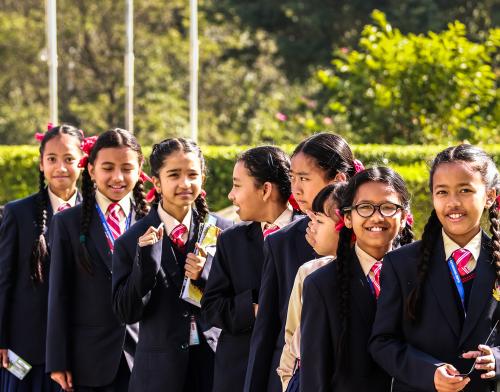We first met Ratnu Kohli in 2019, as he worked in rice fields in Badin, Sindh with his children under the afternoon sun, busy sorting and packing the harvested paddy. Although Ratnu himself studied in school up to class three, none of his eight school-aged children were enrolled. He told us that education was important so his children would not get scammed when selling their crops. Hearing this, we excitedly pointed toward the gleaming, beautiful building of a low-cost private school, standing right across the fields: “Why not enroll your children in this school?” He looked at the school and said, “Children of landowners go to this school.” Ratnu’s concern that the social structures he experienced in his day-to-day life would play out within the school was not put to the test, but the persistence of this fear was a clear sign that the school had not been effective in laying it to rest.
In Pakistan, in addition to rural location, income, religion, caste, and land ownership, factors like gender, spoken language, and a community’s prior exposure to schooling, among others, all play a role in limiting a child’s access to schooling and learning. Countrywide, there is a huge shortfall in meeting the school enrolment needs of 20 million children. Four out of 5 children who are not in schools are from rural areas, and of these, around 60 percent are girls. But being in school alone does not guarantee learning; around half the children who make it to grade 5 cannot read a story (in Pashto, Sindhi, or Urdu) or solve division questions. With multiple and diverse factors affecting a child’s access to schooling and learning, program and policy interventions that fail to meaningfully address the lived realities of the most-excluded children in Pakistan—and their families and communities—are likely to fall short.
I have come to Brookings as a 2022 Echidna Global Scholar to focus on how the Pakistani education system can effectively engage the most excluded children (particularly girls) in quality educational opportunities from the start of the compulsory school-going age (5 years).
As part of The Citizens Foundation (TCF), which operates the largest network of independently run, nonprofit schools in the world, I spent three years understanding the context of older out-of-school children (OOSC) in rural Sindh. To access and visit their communities and families, I relied on women who speak Sindhi fluently and are culturally responsive to the needs of the community. Working with other women helped in accessing all children in the community, especially girls, who are among the most excluded OOSC.
Discussions with men, women, and children in rural communities allowed us to understand their worldviews, aspirations, routines, and responsibilities, as well as the structural challenges they face. These insights became the building blocks for the design of the informal education program at TCF. We piloted the program in 2020 and saw enrollment of children—including older girls ages 10 to 14 from low-income families, socially disadvantaged castes, and minority religions—in the program and observed improvements in learning outcomes for most in a span of just 10 months. Among them were Ratnu’s three older children.
In seeing the genesis of an education program developed in partnership with community members, I identified the need for policies at the provincial level to be informed by communities. I have come to Brookings as a 2022 Echidna Global Scholar to focus on how the Pakistani education system can effectively engage the most excluded children (particularly girls) in quality educational opportunities from the start of the compulsory school-going age (5 years). My aim for this journey is not only to identify contextualized and gender-responsive policies that improve education outcomes for all children, but also to work with policymakers in shaping these responses.
The research that I do at Brookings will continue to focus on Sindh and demonstrate large gaps in enrollment between urban and rural areas, with gender playing a major factor in the deficit. Similar to other provinces in Pakistan, underserved children in Sindh are largely those who have never attended schools and the province struggles with delayed enrollment, which does not peak until around age 9. This is not a good sign for school retention, as evidence suggests that delays in school enrollment increase the probability of school dropout.
While Ratnu’s older children enrolled in TCF’s community-based education program, the recent floods make me wonder when they will be able to resume their education and what support mechanisms they will need to alleviate the impact of flooding and increasing poverty. I also think about the extent to which their life outcomes will change and the relationships schools need to build with parents like Ratnu to ensure children start school on time. With these questions in mind, I have begun my journey with Brookings with the hope of designing an education policy in Sindh that delivers for the most excluded children.






Commentary
How do we ensure that schools in Pakistan engage the most excluded children in quality education?
September 7, 2022